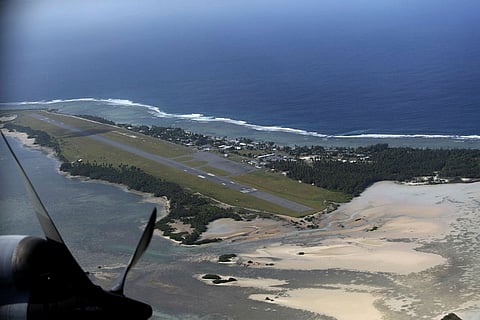

Australia, France, and India ought to be cooperating more closely in the surveillance of the Indian Ocean through their valuably located islands, enhancing the awareness of each of country without additional cost.
They should first share information that they're already collecting, then move as soon as possible to coordinate their patrols, mostly by aircraft.
Finally, they should share access to runways on their territories that together provide excellent access to the Indian Ocean.
The activities that they will most want to watch would include the entry into the ocean by Chinese surveillance vessels masquerading as research vessels, and they'd keep an eye on pirates, maritime terrorism, drug trafficking, and illegal and unregulated fishing.
Ensuring maritime safety and security is already a part of the trilateral agreement signed by the three democracies in 2020, but progress in putting that pact into effect has been very slow.
Combining and compressing vital information to build a common coherent maritime picture is already taking place at the Information Fusion Centre—Indian Ocean Region (IFC-IOR). That role is played by liaison officers stationed in Gurugram, India, but more can be done in that regard.
The next step must be coordinated patrolling and surveillance of the region through the three nations' extended territories located in the north, east, and west of the Indian Ocean.
France has Reunion and Mayotte in the west, Australia has the Cocos (Keeling) Islands towards the east, and India has Lakshadweep and the Andaman and Nicobar islands on the western and eastern sides of its mainland. Between them, they overlook the entire Indian Ocean.
The islands' significance is boosted by their strategic location astride key choke-points: Reunion is near the Suez Canal, the Cocos Islands are adjacent to Australia's major trade routes, and the Andaman and Nicobar islands are near the Malacca Strait.
Ultimately, the three countries can maximise the use of the islands by allowing each other to routinely use the runways on them. Then the surveillance of any one part of the ocean wouldn't be limited by the immediate availability of aircraft for any one of the countries.
Being clear-sighted and observant over the trade routes is immensely significant, as normalising the entry of surveillance vessels as research vessels has appeared as a new Chinese ploy in the Indian Ocean. Those vessels, some mapping the seabed probably for economic resources such as polymetallic nodules, have pointed to China's long-term intentions in the Indian Ocean.
Data on the depth and surface of the ocean floor, oxygen levels, and chlorophyll levels is useful not only for placing China's submarines but can be used to track those of others.
Further, it seems that the entry and exit of Chinese vessels has a set purpose and schedule. For example, in March 2024, the Chinese ship Xiang Yang Hong 01 entered the Bay of Bengal just before India conducted tests of its Agni V ballistic missile from its east coast. Repeated instances of intentional Chinese presence in the area where India has conducted missile tests have provoked immense concern and caution.
It must be admitted, however, that Western nations, especially the United States, take a close interest in Chinese missile tests.
India and France have been conducting joint surveillance missions from Reunion in the southwest. Work is underway to enlarge the airstrip in the Cocos (Keeling) Islands to accommodate large surveillance aircraft, such as P-8 Poseidons, which India and Australia both use.
Last month, a P-8A of the Royal Australian Air Force made an inaugural visit to Reunion, demonstrating not only the crew's proficiency but also showing emerging cooperation between Australian and French forces. Thus, the dyads of India–France, India–Australia, and Australia–France are already engaged in joint surveillance and reconnaissance in the Indian Ocean. Those arrangements must now be operationalised as a triad using the Indian Ocean island territories of the three countries.
As all three democracies seek to revisit, reimagine, and recalibrate their collective vision of a free and open Indian Ocean, their collaborative partnership in surveillance and reconnaissance will form the bedrock for a strong and stable security apparatus. A joint exercise of this kind will multiply the synergy and interoperability between their forces.
Lastly, engaging in such a collaborative and cohesive exercise will demonstrate the commitment of each of the three players to building and maintaining the security architecture of the Indian Ocean.
